Author: Alan Weissberger
ZTE reports higher earnings & revenue in 1Q-2024; wins 2023 climate leadership award
China’s ZTE reported 3.7% higher Q1-2024 earnings of 2.7 billion Chinese yuan (US$380 million), with sales up 5% to RMB30.6 billion ($4.2 billion).
With decreased CAPEX from China’s network operators, ZTE accelerated its transition from full connectivity to “connectivity + computing power” ino order to expand its addressable market.
Internationally, ZTE said it “continued to achieve continuous breakthroughs with major telecom operators in key countries, sustaining its growth trend. Simultaneously, in terms of government-enterprise business and consumer business, the company intensified its expansion in these two sectors, with both segments returning to rapid growth paths.”
That’s in sharp contrast to its European network equipment rivals, who have been exposed by the worldwide 5G wind-down. Nokia lost a fifth of its revenue in Q1; Ericsson reported a 14% slide, with network sales off by 19%.
ZTE didn’t break out its segment figures for Q1, but its 2023 full-year filing showed it remains heavily reliant on its home market, which contributed just under 70% of total revenue. Both ZTE and Huawei derive at least 80% of network spending by China’s state-owned telco giants (China Mobile, China Telecom, China Unicom).
ZTE, leveraging its long-term accumulation of ICT full-stack full-domain capabilities, is pursuing strategic opportunities in digitization, intelligence, and decarbonization. Keeping pace with the wave of AI development, the company deepens its business layout of “connectivity + computing power,” providing global customers in high-speed networks, computing infrastructure, and industrial digital transformation with an open and innovative intelligent network foundation.
ZTE says it’s committed to deeply integrating AI technology with terminals to drive product innovation and intelligent upgrades, thus constructing a smart ecosystem. For terminals, ZTE has proposed the concept of “AI for All,” launched an AI-driven all-scenario intelligent ecosystem 3.0, and released a variety of innovative products and technologies.
In the first quarter of 2024, the company’s research and development expenses were RMB 6.38 billion, accounting for 20.9% of operating revenue. That provided sustained strong impetus for business innovation and product enhancement/competitiveness.
Moving forward, ZTE says it is committed to actively embracing the digital construction wave, accelerating its transition towards “connectivity + computing power,” thereby driving the company’s high-quality development. The company will continue collaborating with industry partners to establish highly efficient, green, and intelligent digital infrastructure, aiming to advance the development of the global ICT industry.
……………………………………………………………………………………………………..
Separately, ZTE was honored with 2023 Climate Leadership Award (A list) at “Embracing International Disclosure Standards and Amplify the Voice of Chinese Companies – CDP China 2023 Annual Report Release and Award Ceremony.” This recognition comes as ZTE’s case study, “Target-Driven, Layered Decoding: Pathways and Actions to Achieve Climate Goals” was featured in 2023 CDP China Corporates Disclosure Report. The event further acknowledged ZTE’s outstanding contributions to climate change mitigation and sustainable development.
Summer Chen, Vice President and General Manager of Branding & PR Strategies at ZTE, shared the company’s actions and leadership in promoting green innovations during her speech titled “Shaping Digital Innovation for a Shared Sustainable Future.” She stated, “Green and sustainable development is a global consensus, with digital intelligence playing a pivotal role. In line with this trend, ZTE has dedicated itself to green and low-carbon innovations, and received an A rating for its leading climate action in CDP Climate Change 2023 Questionnaire, an honor achieved by only 2% of global participants.”
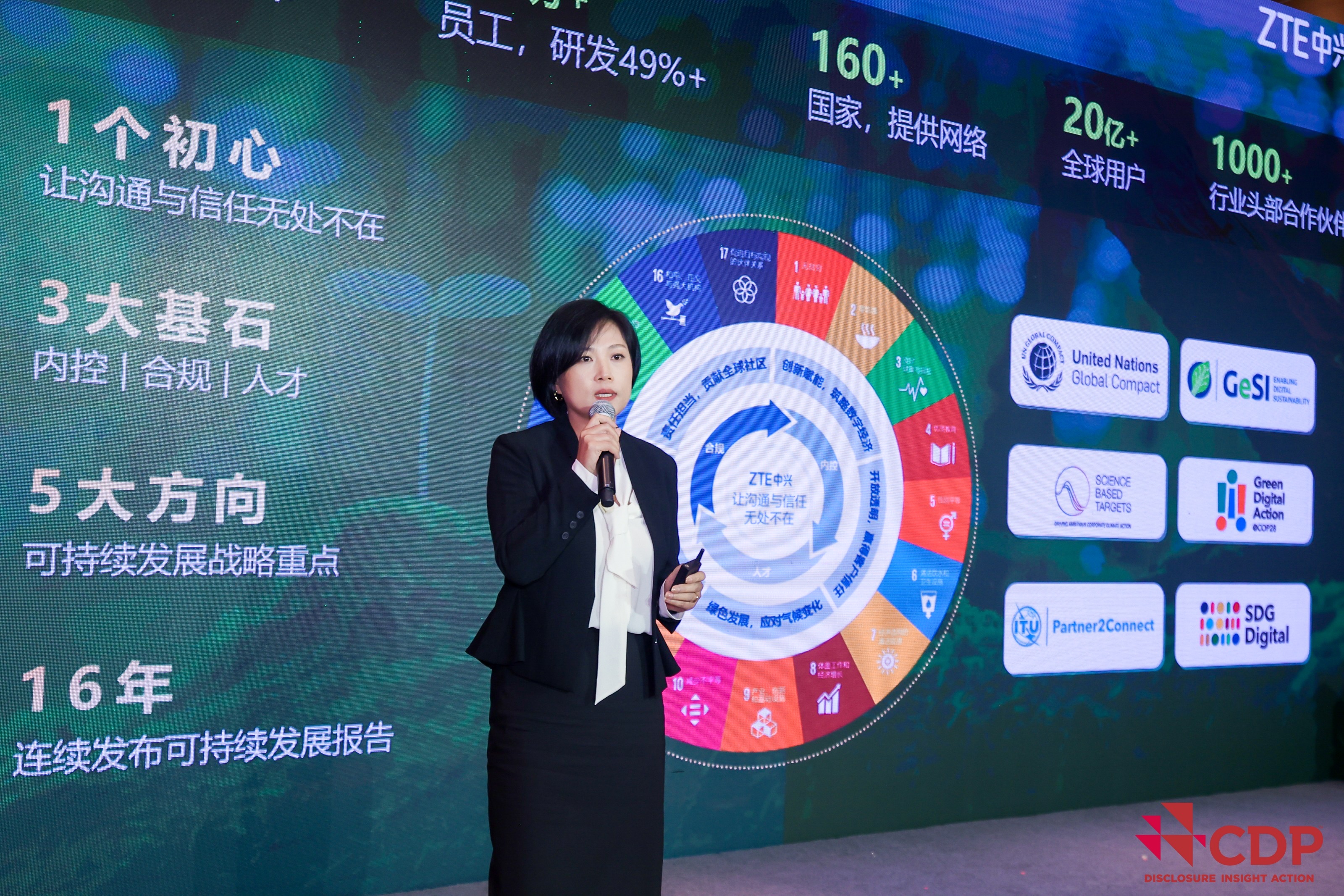
Ms. Chen emphasized ZTE’s commitment to green development, leveraging technological innovation to shape an eco-friendly ecosystem. This commitment is underpinned by four dimensions: green operations, green supply chain, green digital infrastructure and green empowerment, contributing to achieve carbon peak and carbon neutrality goals. ZTE focuses on energy conservation and carbon reduction within its business operations, while empowering industries to foster new quality productive forces, aiming to set a global benchmark as a green, sustainable, and low-carbon tech company.
References:
https://www.zte.com.cn/content/dam/zte-site/investorrelations/en_quarter_report/20240425.pdf
https://www.zte.com.cn/global/about/news/zte-scoops-2023-climate-leadership-award-a-list.html
https://www.lightreading.com/finance/zte-defies-capex-slump-with-higher-q1-earnings-revenue
https://www.zte.com.cn/content/dam/zte-site/investorrelations/en_annual_report/20240326.pdf
China Mobile & ZTE use digital twin technology with 5G-Advanced on high-speed railway in China
Türk Telekom and ZTE trial 50G PON, but commercial deployment is not imminent
ZTE sees demand for fixed broadband and smart home solutions while 5G lags
Vodafone Idea (Vi) to launch 5G services “soon;” Awards optical network equipment contract to ZTE
TM and ZTE Malaysia to develop next-gen hybrid cloud 5G core network
T-Mobile & EQT Joint Venture (JV) to acquire Lumos and build out T-Mobile Fiber footprint
T-Mobile and EQT, a purpose-driven global investment organization, today announced they have entered into a joint venture (JV) with EQT’s Infrastructure VI fund (EQT) that will acquire fiber-to-the-home platform Lumos from EQT’s predecessor fund EQT Infrastructure III.
The JV will bring T-Mobile’s retail, marketing, brand and customer experience strengths together with EQT’s fiber infrastructure investment expertise. Together they will acquire Lumos’ scalable fiber network build capabilities to deliver best-in-class high-speed fiber internet connectivity to customers across the U.S. without access to fiber today. After the transaction closes, Lumos, which currently reaches 320,000 households over 7,500 route miles with fiber optic internet and home wi-fi service in the Mid-Atlantic, will transition to a wholesale model with T-Mobile as the anchor tenant owning customer relationships and leveraging its brand to attract new subscribers. The JV will focus on market identification and selection, network engineering and design, network deployment, and customer installation.
“As the demand for reliable, low-latency connectivity rapidly increases, this deal is a scalable strategy for T-Mobile to take a significant step forward in expanding on our broadband success and continue shaking up competition in this space to bring even more value and choice to consumers,” said Mike Sievert, CEO of T-Mobile. “Together with EQT and Lumos, T-Mobile is building on our position as the fastest growing broadband provider in the country in a value-accretive way that complements our sustained growth leadership in wireless. Customers – homes and businesses – who get the fast, affordable, and reliable internet they need will be the real winners,” he added.
T-Mobile provides a unique value proposition and much-needed reliable connectivity to homes and businesses across the country through its 5G Internet, a fixed wireless internet service on its 5G network that is available to more than 50 million households and businesses nationwide and serves over 5 million customers, as well as T-Mobile Fiber, which has launched in parts of 16 U.S. markets. Those launches have shown consumer demand for broadband that T-Mobile cannot meet through its fallow capacity fixed wireless product alone, and many customers want the speed and reliability that only fiber can provide.
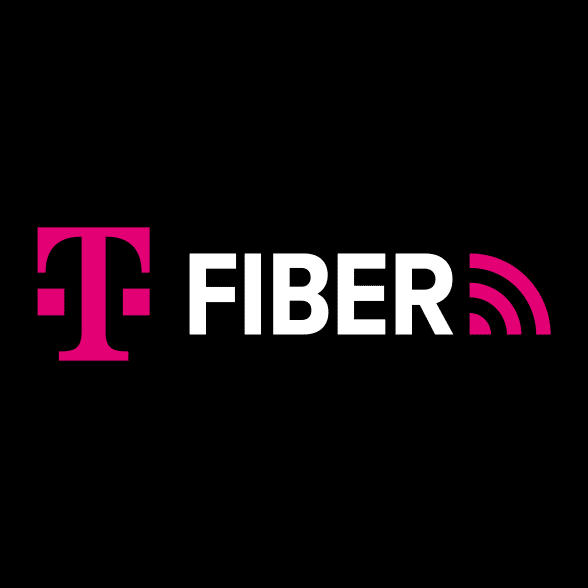
Jan Vesely, Partner within EQT’s Infrastructure Advisory Team said, “We are proud to have partnered with Lumos over the past six years to rapidly scale the company and roll out fiber to underserved markets, and we look forward to continuing to leverage EQT’s considerable digital infrastructure and fiber expertise to support the significant fiber buildout ambitions of T-Mobile and the JV. This new effort will build critical fiber broadband infrastructure that will enable remote work, education, and healthcare use cases across the country. We have worked with T-Mobile as a customer across many of our existing digital infrastructure investments and are delighted to build on that relationship and partner with T-Mobile on this opportunity to roll out fiber to underserved Americans.”
“Lumos takes great pride in our achievements, as we have successfully delivered fiber to hundreds of thousands of homes and businesses, marking a significant acceleration in our growth. Our commitment to enhancing customers’ lives through the development of a network prepared for the demands of tomorrow remains steadfast,” Brian Stading, CEO of Lumos. “With the support of our private equity partner, EQT, and leveraging the strength of the T-Mobile brand and unrivaled customer experience, Lumos is set to expedite our network expansion. This joint venture will amplify our ability to change lives through the transformative power of fiber optic internet.”
The transaction is expected to close in late 2024 or early 2025, subject to customary closing conditions and regulatory approvals. At closing, T-Mobile is expected to invest approximately $950 million in the JV to acquire a 50% equity stake and all existing fiber customers, with the funds invested by T-Mobile being used by Lumos for future fiber builds. The next capital contribution by T-Mobile out of an additional commitment of approximately $500 million is anticipated between 2027 and 2028. These combined investments are expected to allow Lumos to reach 3.5 million homes passed by the end of 2028. T-Mobile continues to expect to complete its remaining authorization for share repurchases and dividends in 2024.
With this transaction, EQT Infrastructure VI is expected to be 35-40% percent invested (including closed and/or signed investments, announced public offers, if applicable, and less any expected syndication) based on target fund size and subject to customary regulatory approvals.
References:
https://www.t-mobile.com/news/business/t-mobile-eqt-jv-to-acquire-lumos
T-Mobile US, Ericsson, and Qualcomm test 5G carrier aggregation with 6 component carriers
Ookla: T-Mobile and Verizon lead in U.S. 5G FWA
T-Mobile combines Millimeter Wave spectrum with its 5G Standalone (SA) core network
FCC restores net neutrality order, but court challenges loom large
The FCC voted on Thursday, April 25th along party lines to pass its order on Safeguarding and Securing the Open Internet, restoring net neutrality and reestablishing the Commission’s Title II authority over broadband services. The restored “net neutrality” rules prevent broadband internet service providers/ISPs (e.g. Comcast and AT&T) from favoring some sites and apps over others. The vote was taken at the FCC’s open meeting for the month of April. Democrats on the FCC voted to restore net neutrality and Title II rules. The issue will face inevitable court challenges and is likely to be reversed if Donald Trump wins the November presidential election.
As a result of the vote, the FCC restores fundamental authority to provide effective oversight over broadband service providers, giving the Commission essential tools to:
• Protect the Open Internet – Internet service providers will again be prohibited from blocking, throttling, or engaging in paid prioritization of lawful content, restoring the rules that were upheld by the D.C. Circuit in 2016.
• Safeguard National Security – The Commission will have the ability to revoke the authorizations of foreign-owned entities who pose a threat to national security to operate broadband networks in the U.S. The Commission has previously exercised this authority under section 214 of the Communications Act to revoke the operating authorities of four Chinese state-owned carriers to provide voice services in the U.S. Any provider without section 214 authorization for voice services must now also cease any fixed or mobile broadband service operations in the United States.
• Monitor Internet Service Outages – When workers cannot telework, students cannot study, or businesses cannot market their products because their internet service is out, the FCC can now play an active role.
Here are a few FCC commissioner comments:
“Broadband is now an essential service. Essential services, the ones we count on in every aspect of modern life, have some basic oversight. So let’s be clear about what we are doing today. This agency, the nation’s leading communications authority, believes every consumer deserves Internet access that is fast, open and fair. That is why we determine that the Federal Communications Commission should be able to assist consumers and take action when it comes to the most important communications of our time. And that’s broadband. This is common sense,” said FCC Chairwoman Jessica Rosenworcel.

FCC Chairwoman Jessica Rosenworcel presides at the FCC’s open meeting on Thursday, April 25, 2024.(SOURCE: FCC LIVESTREAM)
Republican FCC Commissioner Brendan Carr offered a different opinion during a nearly 35-minute diatribe:
“Today’s order is not about correcting a market failure. Broadband access is more vibrant and competitive than ever, no matter how you slice the reams of data,” said Carr. “Will ISPs invest as intensely when the rules of the road are opaque, when business choices can be second guessed without notice, when regulators reserve the right to dictate the rate of return or when upgrades and innovations require more and more paperwork and approvals? Uncertainty riddles every aspect of this order … I’m confident that we will right the ship, and I’m certain that the courts will overturn this unlawful power grab.”
The vote drew expected reactions from industry and consumer groups. Those in favor of the ruling celebrated, while still expressing dissatisfaction with a few “shortcomings” of the order. Andrew Jay Schwartzman, Senior Counselor at the Benton Institute for Broadband & Society said:
“Today’s vote provides welcome, if long overdue, protections for all Americans. Despite a few shortcomings, this is the most important thing the FCC can do to promote free speech, competition, public safety, and national security. The Benton Institute for Broadband & Society would have preferred that the Commission continued the debate on whether or not broadband providers should contribute to the Universal Service Fund and that it had taken a more proactive stance toward wireless companies’ efforts to create loopholes to avoid regulation of some 5G services. But those shortcomings do not change the fact that today is a great day for internet freedom.”
On the opposition front, industry trade groups called the rules “heavy-handed” and indicated their intent to file lawsuits.
“ACA Connects will continue to support efforts, including litigation, to overturn these heavy-handed, unnecessary utility-style regulations, which only serve to discourage development of robust and reliable broadband service for all Americans,” said Grant Spellmeyer, president and CEO of ACA Connects, in an emailed statement.
“WISPA is disappointed by today’s action to impose utility regulation on the broadband industry,” said Louis Peraertz, VP of policy for the fixed wireless trade group WISPA–The Association for Broadband Without Boundaries. “Once the final Order is published, WISPA will carefully review it and determine what legal recourse we should take in order to ensure that our members can continue to provide their local communities with reliable high speed broadband service.”
References:
https://www.fcc.gov/document/fcc-restores-net-neutrality
https://www.fcc.gov/net-neutrality
https://www.lightreading.com/broadband/fcc-passes-net-neutrality-order-again-for-now
Analysis: FCC attempt to restore Net Neutrality & U.S. standards for broadband reliability, security, and consumer protection
FCC Draft Net Neutrality Order reclassifies broadband access; leaves 5G network slicing unresolved
FCC Votes to Reverse Net Neutrality & No Longer Regulate Broadband Internet Services
Summary of Verizon Consumer, FWA & Business Segment 1Q-2024 results
Verizon Consumer:
Verizon reported better-than-expected wireless customer results for the Q1-2024, but still lost subscribers. The U.S. #2 telco consumer revenue the quarter was $25.1 billion, an increase of 0.8% YoY as gains in service revenue were partially offset by declines in wireless equipment revenue.
While Verizon lost 158,000 wireless retail postpaid phone customers in the first quarter, that was an improvement over the 263,000 losses the company reported in the same quarter a year ago. Verizon had been expected to lose around 201,000 postpaid phone customers in its consumer division in the first quarter. Thus, the difference between expectations and what Verizon reported is likely due to the estimated 35,000 customers who signed up for a $10 per month second line of wireless service and not necessarily new customers paying full price for a standard wireless subscription.
“It gives customers flexibility,” explained Verizon CFO Tony Skiadas this week during Verizon’s first quarter earnings call, according to Seeking Alpha. “They can add and remove it as desired. The adoption so far has been good.”
“Despite Verizon Consumer Group postpaid phone net adds beating consensus, Verizon stated that ‘a very low single-digit percentage of phone gross adds’ came from Verizon ‘second number,’ which was announced in early March,” wrote the financial analysts with KeyBanc Capital Markets in a note to investors following the release of Verizon’s earnings. “Implied by this is ~35,000 net adds from ‘second number’ without which investors could say Verizon Consumer Group postpaid phone net adds were in line.”
AT&T and T-Mobile offer similar second line wireless plans. T-Mobile has been offering its $10 per month Digits service for years, allowing customers to move their numbers around to various devices, including having two numbers on one phone. AT&T charges users $30 a month to add a line.
………………………………………………………………………………………………
Verizon FWA & Wireline:
Verizon added 354,000 fixed wireless access (FWA) customers in Q1 2024, ending the period with 3.42 million. Record additions of business FWA subs were offset by a slowdown in the residential category.
Verizon’s overall FWA results “remain a puzzle,” MoffettNathanson analyst Craig Moffett explained in a research note (registration required).
“Growth [in FWA] is still relatively strong, but their quarterly results continue to decelerate, something we wouldn’t have expected given the early stage of their Band 76 C-Band footprint,” he noted.
Still, Verizon’s FWA offering continues to provide a solid alternative to cable broadband in the residential segment, despite some “muted activity,” CFO Tony Skiadas said on Monday’s earnings call. “We continue to be comfortable with this pace of [subscriber] growth.”
With respect to wireline, Verizon added 49,000 residential FiOS Internet customers, down from a gain of 63,000 a year earlier. Verizon ended the quarter with 7.02 million residential Fios Internet subs. With DSL losses included, Verizon added 36,000 wireline broadband customers in the period, extending its total to 7.22 million.
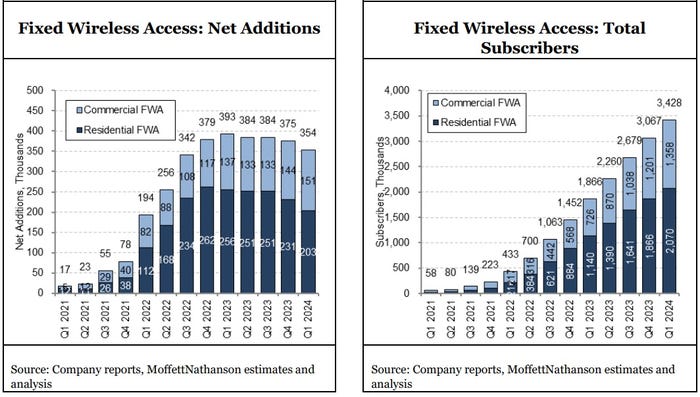
Verizon Business:
- Total Verizon Business revenue was $7.4 billion in first-quarter 2024, a decrease of 1.6% year over year, as increases in wireless service revenue were more than offset by decreases in wireline revenue and wireless equipment revenue.
- Business wireless service revenue in first-quarter 2024 was $3.4 billion, an increase of 2.7% year over year. This was driven by continued strong net additions in the quarter for both mobility and fixed wireless, as well as benefits from pricing actions implemented in recent quarters.
- Business reported 178,000 wireless retail postpaid net additions in first-quarter 2024, including 90,000 postpaid phone net additions.
- Business wireless retail postpaid churn was 1.51 percent in first-quarter 2024, and wireless retail postpaid phone churn was 1.13 percent.
- Business reported 151,000 fixed wireless net additions in first-quarter 2024, representing a 10.2 percent increase from first-quarter 2023. This marked their best quarterly result to date.
- In first-quarter 2024, Verizon Business operating income was $399 million, a decrease of 27.6 percent year over year, and segment operating income margin was 5.4 percent, a decrease from 7.4 percent in first-quarter 2023. Segment EBITDA in first-quarter 2024 was $1.5 billion, a decrease of 7.2 percent year over year, driven by wireline revenue declines. Segment EBITDA margin in first-quarter 2024 was 20.7 percent, a decrease from 22.0 percent in first-quarter 2023.
References:
https://www.lightreading.com/fixed-wireless-access/verizon-s-fwa-business-loses-some-steam-in-q1
Verizon’s 2023 broadband net additions led by FWA at 375K
Ookla: T-Mobile and Verizon lead in U.S. 5G FWA
China Mobile reports record operating revenues in 1st Quarter 2024
China Mobile, the world’s largest operator in terms of subscribers, recorded operating revenues of CNY263.7 billion ($36.4 billion) in the first quarter of the year, an increase of 5.2% year-on-year, the carrier said in its earnings statement. The company’s net profit increased 5.5% year-on-year to CNY29.6 billion. Also, the telco reported that revenue from telecommunications services was CNY219.3 billion, up by 4.5% year-on-year. The telco ended the first quarter of the year with a total of 488 million 5G subscribers. China Mobile had reported a net addition of 138 million 5G subscribers during 2023. In the mobile segment, the telco reached a total of 996 million subscribers at the end of March 2024, after an addition of 5 million customers during the first quarter.
Highlights:
- Adopt a strategy-led approach, driving new milestones in business performance
- Leverage innovation, deepening strategic transformation with remarkable results
- Expedite further business upgrade, facilitating mutual advancement of the “two new elements”
- Achieve breakthroughs amidst adversity, yielding fruitful results from innovation and reform Dedicated to enhancing shareholder returns, using a multi-pronged approach Forge ahead with determination, accelerating the building of a world-class enterprise
Mr. Yang Jie, Chairman of the Company commented, “In 2023, despite various challenges faced by the Company in a complex and severe macro- environment, we seized the opportunities emerging from accelerated economic and social digital transformation. This helped anchor us in our position as a world class information services and sci-tech innovation enterprise. Our efforts were focused on fully implementing our “1-2-2-5” strategy and strengthening innovation and core competitiveness to promote high-quality and sustainable development. Our business results reached new milestones, with revenue surpassing the RMB trillion mark for the first time in our history of development, and net profit attaining a record high. In terms of operations, our strategic transformation, reforms and innovation all advanced to a new level, underscoring our solid progress in establishing a world-class enterprise that takes pride in outstanding products, reputable brands, leading innovation and modern governance.”
“The Group will continue to pursue stable progress while forging ahead with a steadfast focus on integrity and innovation. We will enhance core functions, improve core competitiveness, expedite the cultivation and growth of emerging sectors of strategic importance, develop new quality productive forces at an accelerated pace, and establish ourselves as a world-class information services and sci-tech innovation enterprise to a high standard. With these efforts, we will consistently create greater value for our shareholders and customers,” the China state owned telco said.
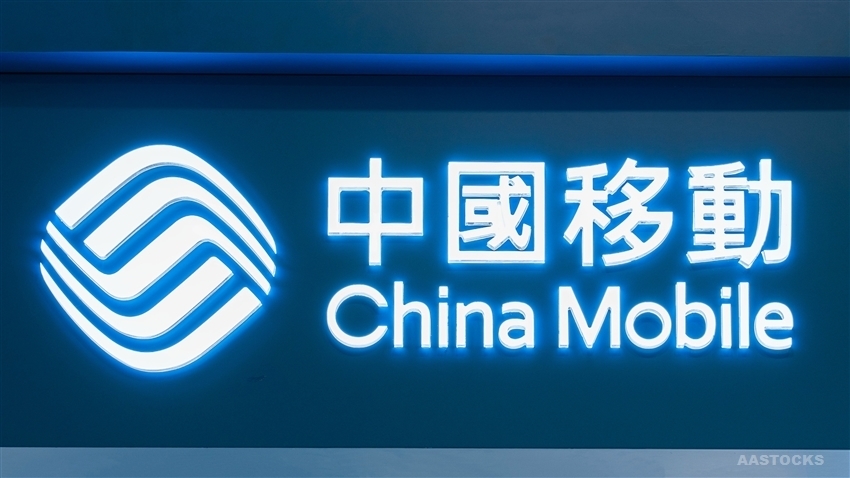
China Mobile plans to launch 5G-Advanced (5G-A) technology in over 300 cities across China this year, according to local press reports. The telco, which claims a leading role in the development of 5G-A 3GPP specifications, also plans to promote the release of over 20 5G-A compatible phones within the year. To showcase its new 5G-A network, China Mobile has established 5G-A demonstration halls in various locations across China.
China Mobile’s vice president, Gao Tongqing, stated that this launch will further accelerate the development of new information infrastructure and unlock the full potential of 5G technology. The carrier also said it aims to achieve widespread adoption of 5G-A technology in China through partnerships with manufacturers and chip suppliers.
Beijing, Shanghai and Guangzhou are among the first cities where China Mobile will activate the new technology.
China had a total of 11.6 million mobile communication base stations as of the end of last year, of which 3.4 million were 5G base stations. 5G base stations currently account for nearly 29% of total mobile base stations in China. The ratio is 7.8 percentage points higher compared to the end of 2022.
Future Outlook:
The impact of the new wave of technological revolution and industrial reforms will continue to grow, so will the importance of integrated innovation. The three aspects of this integrated innovation will be highlighted in the power of information, the new generation information technology, and the merger of information service and social operation systems. At the same time this integrated innovation will deepen in three directions – the applications of a new generation of information technology to rapidly form new growth momentum, the collaboration of industry, academia, research and application to foster a new innovation paradigm, and the integration of digital and real economy to open up new development opportunities.
China Mobile sees valuable opportunities as they expand our information services. With the advocacy of the national “AI+” initiative and the further accelerated advancement of Digital China, the industry experiences new growth potential from the development of new quality productive forces. This progress brings forth the emergence of data as a new factor of production, computility as a new fundamental energy source and AI as a new instrument of production. The information services industry has not only in itself become an important sector for the development of new quality productive forces, but also a strong support for other sectors in this pursuit. General AI, particularly represented by AI large models, is developing robustly.
The role of AI is also fast changing from an assisting tool that helps different industries improve quality and efficiency, to an indispensable infrastructure and core capability that supports economic and social transformation and development. While AI brings forth disruptive applications, “AI+” opens up vast blue-ocean of opportunities. Fixating the vision of building a world-class information services and sci-tech innovation enterprise, we will capture opportunities arising from the development of “AI+” and extending our “5G+” initiatives towards 6 this direction. We will identify a new roadmap of transformation and upgrade through comprehensive, systematic and deep-dived integrated innovation. In doing so, we will drive more creation to enrich life, enhance quality production and support precise governance powered by digital intelligence. We will satisfy, drive and create demand to form a new for value growth trajectory and fuel the future development of the Company.
References:
p240321.pdf (chinamobileltd.com)
https://www.rcrwireless.com/20240423/carriers/china-mobile-q1-revenues-up-5-year-on-year
China Mobile & ZTE use digital twin technology with 5G-Advanced on high-speed railway in China
China Mobile & China Unicom increase revenues and profits in 2023, but will slash CAPEX in 2024
China Mobile verifies optimized 5G algorithm based on universal quantum computer
China Mobile to deploy 400G QPSK by the end of 2023
Omdia: China Mobile tops 2023 digital strategy benchmark as telcos develop new services
du (UAE) deploys Microchip’s TimeProvider 4100 Grandmaster clock for advanced 5G network services
Du, the United Arab Emirates Integrated Telecommunications Company (EITC), announced that it has deployed Microchip’s TimeProvider 4100 Grandmaster clock for advanced 5G network services. Du said the deployment, as part of its investment in 5G technology, aims to provide its customers with best-in-class broadband services and network performance.
Microchip’s end-to-end timing solutions generate, distribute and apply precise time for multiple industries, including communications, aerospace and defense, IT infrastructure, financial services, power utilities and more. The company provides a broad range of clock and timing solutions ranging from MEMS oscillators to active hydrogen masers.

Image Credit: Microchip
Ericsson on 5G use cases: remote surgery, augmented and virtual reality with AI agent all depend on 3GPP URLLC specs
5G for Remote Surgery:
This year, surgeons in Florida working with Ericsson, were able to operate on remote patients in Dubai and Shanghai, using 5G technology, according to Mischa Dohler, Ericsson vice president-emerging technologies.
A hospital in China used a 5G-enabled robot to perform spinal surgery on patients, and doctors used VR headsets to livestream the operation. The robot implanted over 62 pedicle screws in the patients’ spinal cord. Here’s a pic of that:

Photo by Wang Fei/For China Daily
Dohler said he’s working with the White House, FCC, NTIA, Food and Drug Administration and others to make remote surgery “a reality.” More widespread use of the technology won’t happen unless smaller carriers also get involved. We will have not only humans using your networks, but also machines more and more,” Dohler added.
Gartner’s market research underscores the importance of 5G SA, predicting that by 2025, it will be the foundation for the majority of applications demanding sub-10 millisecond latency. This transition is not merely a technical upgrade but a strategic enabler for industries poised to benefit from real-time data processing and decision-making. However, the ultra low latency depends on two 3GPP Release 16 specs – 1.] 5GNR enhancements for URLLC in the RAN and 2.]URLLC in the 5G SA core network– being completed, performance tested and implemented. That has not happened yet and without it there can’t be any 5G URLLC use cases like remote surgery!
Real-time remote surgeries, once a concept of futuristic medicine, are becoming a reality. The ability to perform surgical procedures from thousands of miles away, with real-time response and precision, could revolutionize healthcare accessibility and outcomes. For example, a pilot project involving 5G SA-enabled remote surgery successfully demonstrated how surgeons could operate with millisecond-level precision, mitigating geographical barriers to specialized medical care.
……………………………………………………………………………………………………………….
Ericsson’s Dohler predicted growing use of augmented and virtual reality and AI “agents,” computer programs capable of performing tasks autonomously, which people will use as part of their daily lives. New technology will require networks that can handle increased traffic, he said. New data traffic patterns “will hit you at some point this decade,” he said. “You will need to do some bold moves.”
………………………………………………………………………………………………………..
References:
https://www.ericsson.com/en/blog/2024/3/cutting-the-cord-lifesaving-telesurgery-in-the-age-of-5g
https://www.chinadaily.com.cn/a/201908/29/WS5d670e17a310cf3e355686fa.html
https://www.linkedin.com/pulse/dawn-new-era-navigating-shift-from-5g-nsa-sa-tayroni-fkvre/
Frontier Communications recovering from unknown cyberattack!
Frontier Communications provides fiber optic based gigabit Internet access to millions of consumers and businesses across 25 states. Frontier Communications said on Thursday that it’s ‘experiencing technical issues with our internal support platforms.’ Frontier’s mobile apps are also down, with the same warning message being displayed after launching the application. A company representative did not respond to questions about the situation.
The Texas-based telecommunications company reported a cyberattack to the Securities and Exchange Commission (SEC) on Thursday. Frontier said it detected unauthorized access to its IT systems on April 14th and began instituting “containment measures” that included “shutting down certain of the Company’s systems.” The shutdowns caused operational disruption that the company said “could be considered material.”
“Based on the Company’s investigation, it has determined that the third party was likely a cybercrime group, which gained access to, among other information, personally identifiable information,” the company said in the SEC filing.
“As of the date of this filing, the Company believes it has contained the incident and has restored its core information technology environment and is in the process of restoring normal business operations. Based on the company’s investigation, it has determined that the third party was likely a cybercrime group, which gained access to, among other information, personally identifiable information,” the company said.

Investigations into the incident are ongoing and they have hired cybersecurity experts to help with the incident. Law enforcement agencies have been notified.
Despite saying that the shutdowns could be considered material, Frontier later wrote that it “does not believe the incident is reasonably likely to materially impact the Company’s financial condition or results of operations.”
According to Leichtman Research Group, Frontier is the seventh largest broadband Internet supplier in the US, with almost 3 million customers. The company’s copper and fiber network stretches across large portions of the East and West Coasts.
Light Reading reported on Thursday of warnings from Frontier. “We’re experiencing technical issues with our internal support platforms,” said a message on the company’s website homepage. “Our residential and business networks are not affected by this issue. In the meantime, please call for assistance.”
……………………………………………………………………………………………………………………………
Last week, AT&T reported that more than 51 million people were affected by a recently-disclosed data breach that included troves of customer information including Social Security numbers, AT&T account numbers and AT&T passcodes.
EchoStar’s Dish Network last year reported a “cybersecurity incident” that impacted its ability to install services, take payments and provide customer care for several weeks.
Fierce reported this week about an intentional cable cut in AT&T’s network that interrupted services at Sacramento Airport.
……………………………………………………………………………………………………………………..
The Federal Communications Commission (FCC) updated its data breach rules for the first time in 16 years in December, expanding regulations on how telecommunication companies report cybersecurity incidents. FCC Chairwoman Jessica Rosenworcel argued that the rules the agency created more than 15 years ago are no longer compatible with a modern world where telecommunication carriers have access to a “treasure trove of data about who we are, where we have traveled, and who we have talked to.”
References:
https://therecord.media/telecom-giant-frontier-cyberattack-sec
https://www.sec.gov/ix?doc=/Archives/edgar/data/20520/000119312524100764/d784189d8k.htm
https://www.lightreading.com/security/frontier-we-were-probably-hacked
Nokia (like Ericsson) announces fresh wave of job cuts; Ericsson lays off 240 more in China
- Nokia Oyj’s Q1 2024 results showed a 26% decrease in net sales and a decrease in operating margins from Network Infrastructure.
- Nokia Technologies saw a doubling of net sales, benefiting from licensing deals and aiming to raise annual net sales to EUR 1.4-1.5 billion.
- Mobile Networks experienced a nearly 40% decrease in net sales, with speculation that telecom firms will prioritize debt repayment over equipment spending.
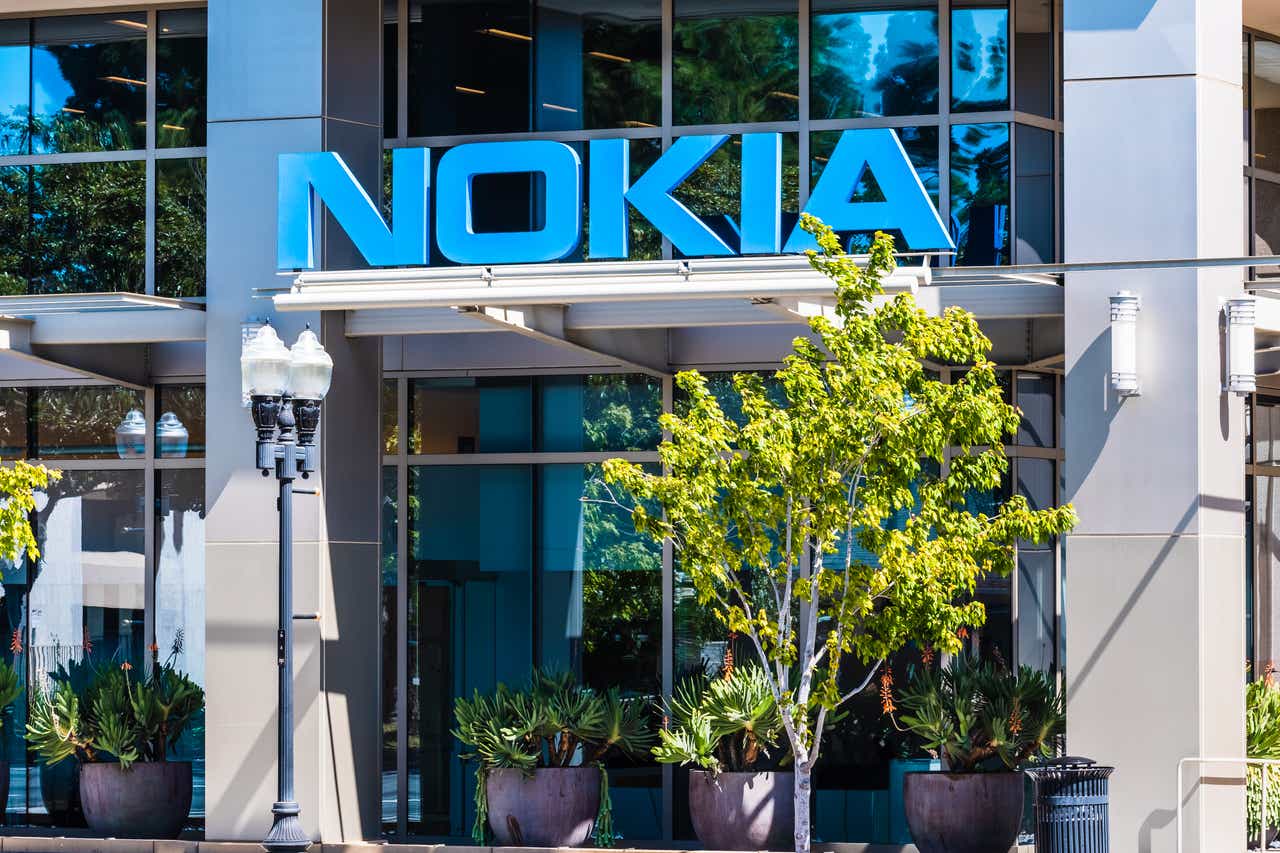
On a call with reporters today, Nokia said it will cut ~11,500 jobs and end up with a workforce of approximately 74,500 employees at the end of 2026. Like Ericsson, it has responded to the global telecom market contraction by announcing a fresh wave of job cuts. Having already eliminated 16,000 jobs since 2016 (the year of that Alcatel-Lucent acquisition), Nokia last year said up to 14,000 jobs would disappear, and no fewer than 9,000, by the end of 2026. The aim is to save between €800 million ($854 million) and €1.2 billion ($1.3 billion) in annual expenses. That newest layoff round follows Ericsson’s announcement that it will lay off ~1,200 employees in Sweden as part of cost-cutting measures announced earlier this year as telco customers reduce their spending on 5G network equipment.
“We are progressing toward this target and currently looking at somewhere around the midpoint of that range,” Lundmark said when asked by Light Reading if there is now more certainty about the ultimate size of the company at the end of the program. “That will then finally depend on the development of the market situation.”
North American customers that previously gorged on supplies have seen little need in the last year to replenish inventory. The pace of a 5G rollout in India has dramatically slowed. Denied the opportunity to consolidate, European telcos still underinvest in 5G, complain vendors. After managing a €137 million ($146 million) mobile operating profit for the first quarter of 2023, Nokia slid a year later to a €42 million ($45 million) loss.
Nokia’s network infrastructure business group – including fixed residential, optical and Internet Protocol activities – sales were down 26%, to less than €1.7 billion ($1.8 billion). An engine of sales growth during Lundmark’s first years in charge, it registered a 42% fall in operating income, to €82 million ($88 million). At cloud and network services, meanwhile, revenues dropped 14%, to €652 million ($696 million), and losses widened 35%, to €27 million ($29 million).
“We have said that we are continuously doing active portfolio management – you have seen some our recent moves that we did last year,” Lundmark said. Disposals included the €185 million ($198 million) sale of a device management business to Canada’s Lumine Group and the earlier transfer of about 350 employees working on cloud platforms to IBM-owned Red Hat.
“We are pleased with the strategy that we have in place in mobile networks,” said Lundmark. “We have a strong value proposition there, we have increased our market share in recent years, and we have a good strategy to deliver value to our shareholders,” he added.
After Intel’s failure to deliver 10-nanometer microprocessors, Nokia resorted to field programmable gate arrays (FPGAs) and its competitiveness suffered. But Nokia’s Mobile Networks boss Tommi Uitto subsequently introduced the well-regarded Broadcom and Marvell Technology as chip suppliers alongside Intel, and the FPGAs have now been replaced. Outside China and the U.S., Nokia’s market share has recently grown, say independent analysts.
In mobile, the full-year outlook remains relatively bleak, even if the second half brings some improvement. “The market has been really, really weak, which is not a Nokia issue,” said Lundmark, in his detailed answer to that question about a sale of mobile assets. “It is an industry issue. It has to be a matter of time before operators again will have to start investing, and, once that happens, we will be in a strong position,” he concluded.
……………………………………………………………………………………………………………………………………………………………………………
Update: Ericsson has laid off 240 employees in China, part of a restructuring in the country that will affect one of its largest research hubs globally. Ericsson said the positions would be cut in line with the company’s effort to diversify its research and development footprint to better align with its sales globally. The employees impacted would be in its core network R&D division in China, a spokesman said.
The Swedish telecommunications-equipment company told employees at an internal meeting in early March that it was embarking on a transformation of its China operations that would continue into 2025, several people who attended the meeting told The Wall Street Journal. The company has plans to reduce headcount further in the coming months, people familiar with the company said. One of the people said the R&D team recently had been excluded from working on at least two large projects in the U.S. and Australia.
Ericsson’s market share has been dwindling in China in the 5G era amid intensified competition from local players like Huawei and heightened geopolitical tensions. In its 2023 annual report, Ericsson cautioned that a further escalation of trade tensions between the U.S. and China could hurt its operations in China.
Ericsson had 9,950 employees in China last year, down from 13,783 in 2019, according to company data.
References:
https://www.lightreading.com/5g/nokia-ceo-bids-to-revive-loss-making-mobile-unit-amid-sale-rumors
https://www.wsj.com/tech/ericsson-lays-off-more-than-200-employees-in-china-f4ab7db3″ rel=”noopener” target=”_blank”>https://www.wsj.com/tech/ericsson-lays-off-more-than-200-employees-in-china-f4ab7db3
Huawei to revolutionize network operations and maintenance
Huawei rotating chair Eric Xu kicked off the company’s annual analyst summit in Shenzhen underlining a near ubiquitous focus on AI and outlined a broad strategy designed to improve the competitiveness of its products and operations, without sharing specifics or targets.
Xu explained the company is pursuing a number of initiatives across multiple tracks to take advantage of new opportunities in AI. In addition to driving advancements in AI to build “thriving ecosystems for shared success”, he said Huawei is actively integrating the technology into its internal management to improve operating efficiency.
The company aims to “revolutionize network operations and maintenance” with its autonomous driving network offering, but Xu didn’t provide an update on the ongoing initiative. He added it is working to upgrade its Celia smart assistant, launched in 2018, which is connected to its evolving Pangu AI models developed for a number of sectors.

Eric Xu speaking at 2024 Huawei Analyst Summit
With the company facing tight restrictions on the import of advanced chips and other equipment as well as curbs in many western markets on its networking gear, Xu avoided talking about its core network carrier group and any mention of handsets now sporting high-end domestic chips.
Steven Zhao, Vice President of Huawei’s Data Communication Product Line, delivered a speech entitled “Accelerating Network Transformation Towards All Intelligence”. Mr. Zhao shed light on how Huawei introduced AI technologies to upgrade network capabilities at case-, process-, and system-levels and accelerate network intelligence. Participants, including industry partners, also explored the current trends and future prospects of the Net5.5G industry.
Despite broad trade sanctions, Huawei last August secured 7nm processors for its Mate 60 Pro from state-owned Semiconductor Manufacturing International Corp, raising concerns among U.S. officials if the Chinese chipmaker bypassed export controls.
During the 21st Huawei Analyst Summit, the “Building F5.5G All-Optical Target Network, and Ushering in 10 Gbps UBB Intelligent Era” forum was held, where industry stakeholders deliberated on how to apply F5.5G optical technologies to build home and industry intelligence. Also at this forum, Bob Chen, President of Huawei Optical Business Product Line, said, “To stride to the intelligent era in the next 10 years, a high-quality computing bearer network, that is, F5.5G all-optical premium computing network, needs to be built to ensure that computing power is always-on with 99.9999% availability and instantly-accessible with 1 ms latency. With its ubiquitous 10 Gbps access, the network makes computing power accessible everywhere and connects ubiquitous intelligence, enabling intelligence in various industries.”
…………………………………………………………………………………………………………………
Huawei’s net profit in 2023 increased 144.5% year-on-year to CNY86.9 billion ($12 billion), with revenue rising 9.6% to CNY704.2 billion, driven by a 17.3% increase in consumer revenue to CNY251.5 billion.
Last year, the company combined revenue from its carrier network business and enterprise unit into a single figure. In 2022, Huawei’s carrier group accounted for 44.2% of total revenue.
References:
https://www.huawei.com/en/news/2024/4/has-net-5-point-5g-ai
https://www.huawei.com/en/news/2024/4/has-net-5-point-5g-ai
https://www.huawei.com/en/news/2024/4/has-f5-point-5g-all-optical


